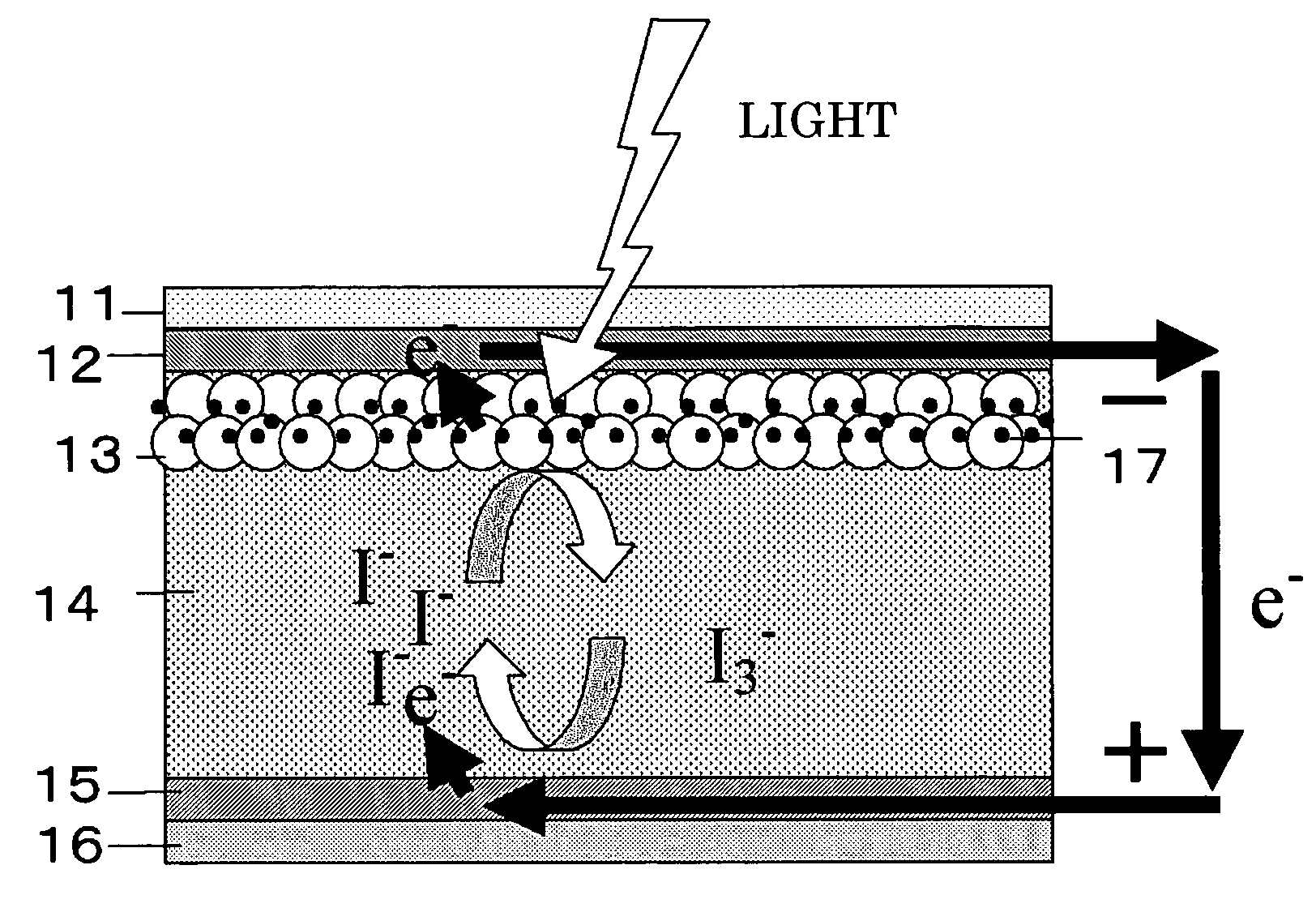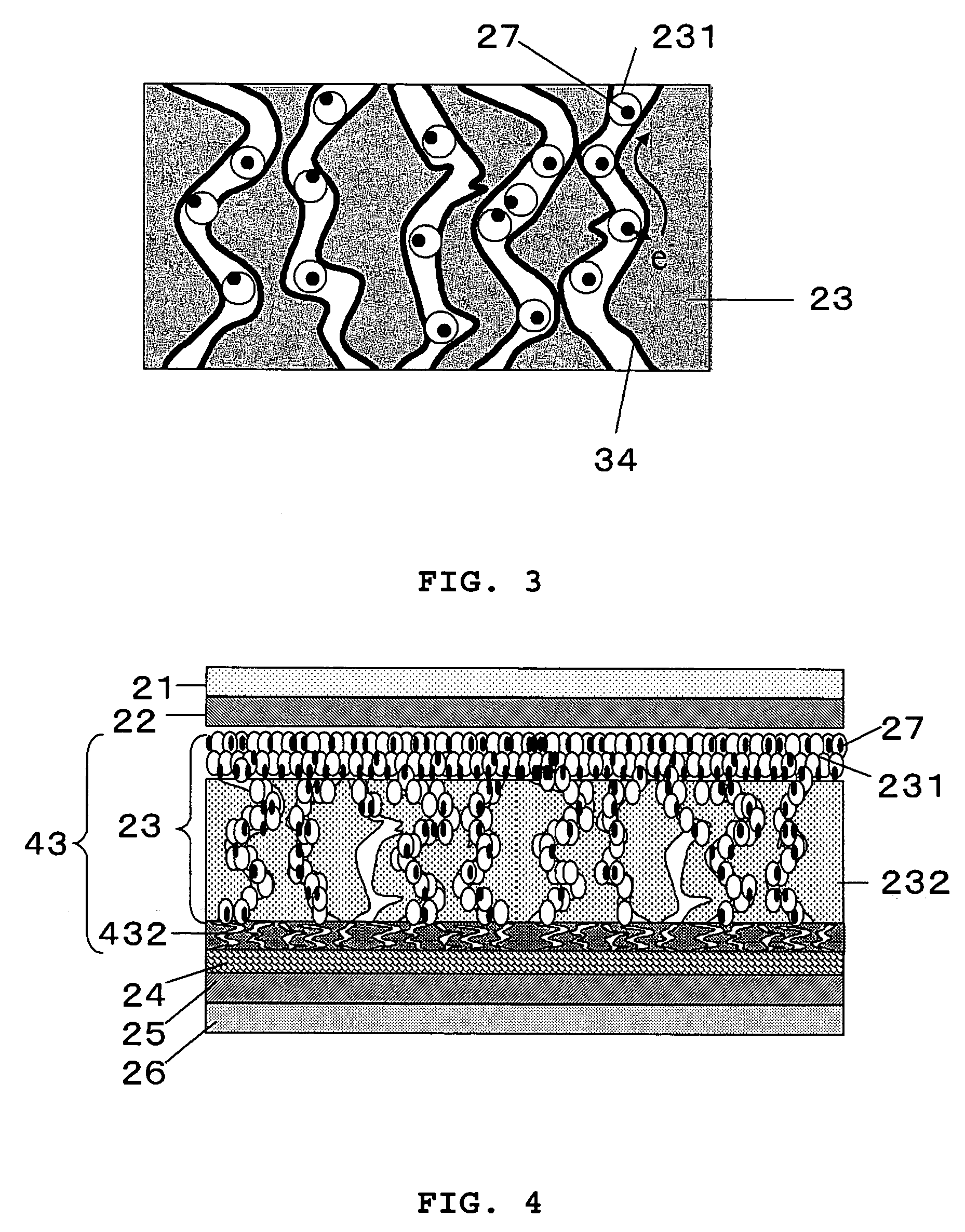Porous electrodes, devices including the porous electrodes, and methods for their production
a porous electrode and electrode technology, applied in the direction of capacitors, solid-state devices, electrolytic capacitors, etc., can solve the problems of insufficient effect of increasing the sensitizing dye for enhancing the light capture ability, the efficiency of light usage of conventional dye-sensitized solar cells is extremely poor, and the production cost reduction has become a major challenge, etc., to achieve high light usage efficiency, high flexibility, and high light usage efficiency
- Summary
- Abstract
- Description
- Claims
- Application Information
AI Technical Summary
Benefits of technology
Problems solved by technology
Method used
Image
Examples
example 1
[0134] Using a twin screw kneading machine (manufactured by Plabor Co., Ltd.) equipped with segments designed so that materials can be kneaded forcibly, a resin composition was prepared by kneading 56% by weight of calcium carbonate (commercial name: Vigot 10, manufactured by Shiraishi Calcium Co., Ltd., average particle diameter: 0.1 μm), 32% by weight of polyethylene powder (HI-ZEX MILLION 340M, manufactured by Mitsui Chemicals, Inc., weight average molecular weight=3,000,000, melting point=136° C.) and 12% by weight of polyethylene wax (HI-WAX 110P, manufactured by Mitsui Chemicals, Inc., weight average molecular weight=1,000, melting point=110° C.). The resulting resin composition was rolled at a roll temperature of 151° C. to yield a primary film with a thickness of about 60 μm.
[0135] The primary film was uniaxially stretched to a stretch ratio of about 6.5 times at a stretch temperature of 110° C. on a tentering device to yield a porous film. Calcium carbonate was removed fro...
example 2
Composite Element
[0151] (1) Composition of Paraaramid Solution
[0152] Poly(paraphenylene terephthalamide) (hereinafter abbreviated as PPTA) was synthesized using a 5-liter separable flask equipped with a stirring blade, a thermometer, a nitrogen introduction tube and a powder addition port. Into the fully-dried flask, 4200 g of NMP was charged. Then, 272.65 g of calcium chloride which was dried at 200° C. for two hours was further added and heated to 100° C. When the calcium chloride was completely dissolved, the mixture was cooled to room temperature. Then, 132.91 g of paraphenylenediamine (hereinafter, abbreviated as PPD) was added and completely dissolved. While the solution was held at 20±2° C., 243.32 g of terephthalyl dichloride (hereinafter, abbreviated as TPC) was added in ten portions at about 5-minute intervals. The solution was thereafter held at 20±2° C. for one hour and then was stirred under reduced pressure for 30 minutes for removal of air bubbles. The resulting po...
PUM
 Login to View More
Login to View More Abstract
Description
Claims
Application Information
 Login to View More
Login to View More - R&D
- Intellectual Property
- Life Sciences
- Materials
- Tech Scout
- Unparalleled Data Quality
- Higher Quality Content
- 60% Fewer Hallucinations
Browse by: Latest US Patents, China's latest patents, Technical Efficacy Thesaurus, Application Domain, Technology Topic, Popular Technical Reports.
© 2025 PatSnap. All rights reserved.Legal|Privacy policy|Modern Slavery Act Transparency Statement|Sitemap|About US| Contact US: help@patsnap.com



